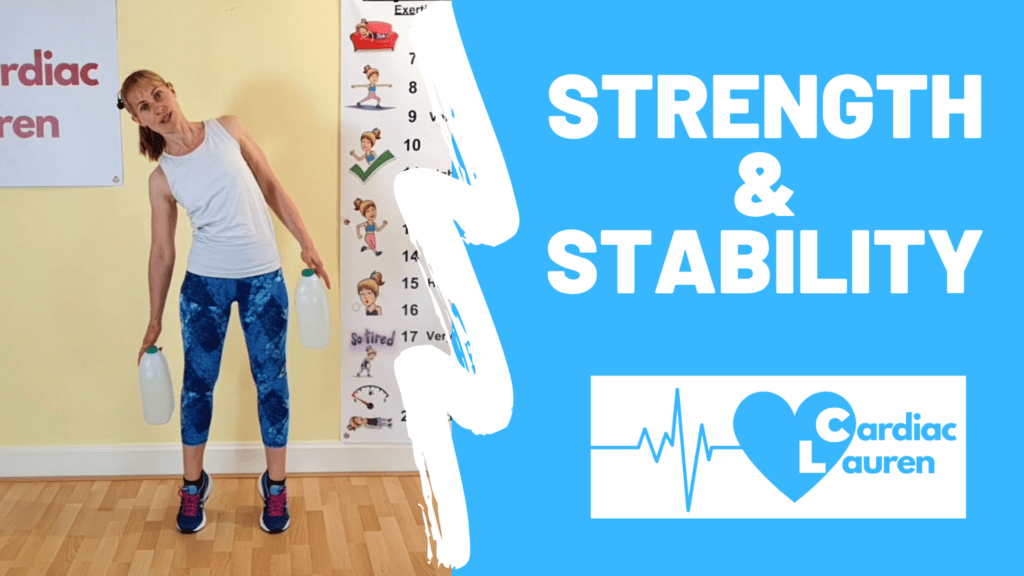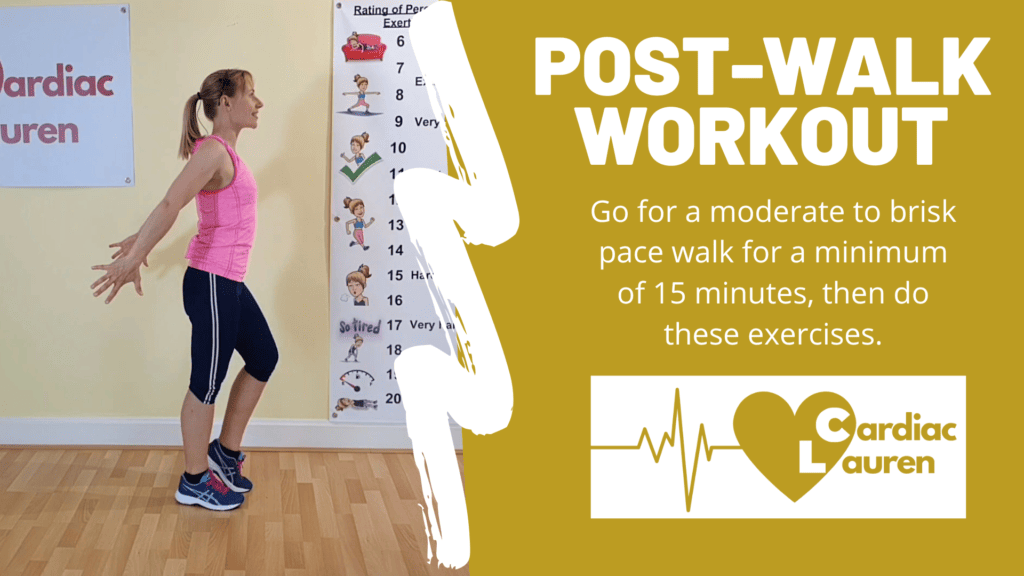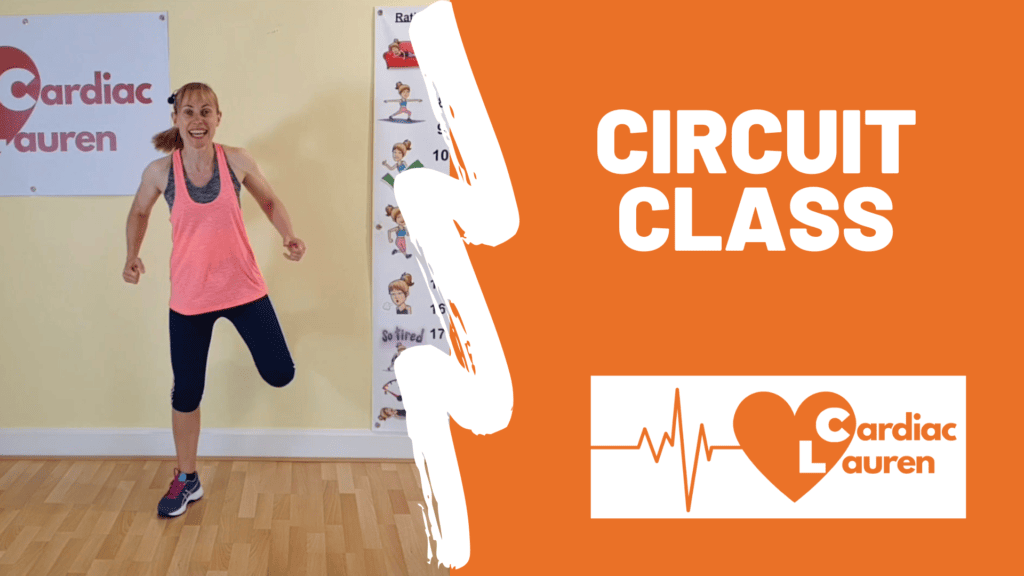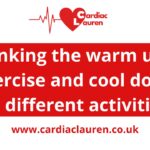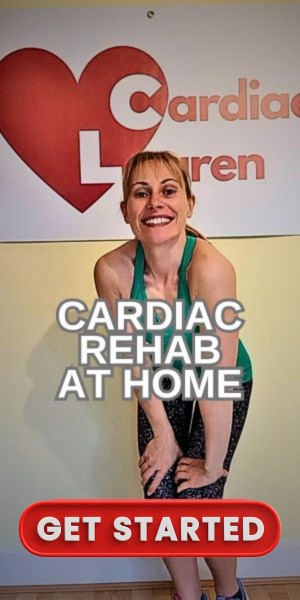The 4 phases of cardiac rehabilitation refer to the steps and interventions an individual moves through from the immediate diagnosis of a heart condition, through to maintaining a safe, fulfilled and active lifestyle in the long term.
Phases 1-3 of cardiac rehabilitation are finite steps, i.e. the individual aims to graduate to the next phase over time, depending on their progress and medical advice. Phase 4 is intended to facilitate the long-term benefits of consistent exercise while living with a heart condition. Patients build their fitness gradually and safely – to both lower the risk of future heart events and to join a friendly and knowledgeable community of people. There is no ‘completion’ of Phase 4 – it is there to support and engage you in the long term for its mental, physical and social benefits.
Table of Contents
What is Phase 1 of cardiac rehabilitation?
Phase 1 refers to the acute stage of the heart condition, and often, it starts from a person’s diagnosis following the heart event. Most cardiac rehabilitation patients will have been admitted to the hospital during Phase 1 – after having had the heart event (myocardial infarction) which may have been called acute coronary syndrome on the discharge notes. During Phase 1, the main goals of recovery are as follows:
- To stabilise the patient so that the symptoms do not worsen
- To prevent further damage to the heart
- To initiate treatments to help the heart muscle recover
The length of Phase 1 rehabilitation depends on the nature of the condition and the extent to which the heart has been damaged. Each person is different, and while one person may respond to initial treatments immediately, others may take longer. It is therefore important to try and be patient while in Phase 1; the lack of control can be frustrating, but the most important thing is that you don’t rush the process.
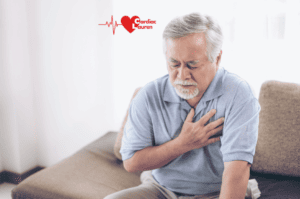
What is Phase 2 of cardiac rehabilitation?
Phase 2 occurs after Phase 1, outside of the hospital setting. It is when patients who have suffered a heart event are discharged from the hospital, return to the care of their GP (General Practitioner) and are thereby classified as ‘outpatients’. However, people who have had surgery, CABG and valve repair or replacements in particular, will have the district or cardiac specialist nurse attend their homes or have appointments with them, so that any lacerations resulting from surgery can be looked after. If you had stents fitted then you will have been given verbal and written information about the early days of your recovery when at home.
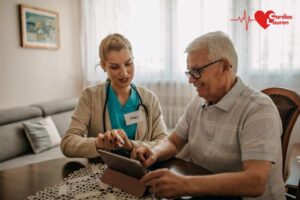
For most Phase 2 patients, discharge summary notes from the hospital will have been forwarded to the local NHS cardiac rehabilitation team and they will make contact by phone. At this initial contact, the patient will be able to ask questions and get advice about taking pain relief, what joint mobilisation and muscle stretches to do, and how to cope with things like coughing or sneezing after having a sternotomy (surgical procedure).
Phase 2 lasts for two to six weeks depending on the heart event or diagnosis. Everyone at this stage will be encouraged to keep moving around the home and start a gradual walking programme. The aim is to achieve 30 minutes of continuous walking daily by the end of the six weeks. For some people, this is easily achievable, whereas others will need longer and their goal may be to just do 10 minutes of activity each day. The cardiac rehab team sees everyone as an individual and will tailor their recovery to each person.
What is Phase 3 of cardiac rehabilitation?
Phase 3 is where you will start a comprehensive cardiac rehabilitation programme, predominantly with your local NHS team. This is different from Phase 2, where you are still recovering, understanding and adapting to your diagnosis.
In Phase 3, education, exercise and support from a multidisciplinary team are put together in a 4–12-week programme. The primary goal of Phase 3 cardiac rehabilitation is to help individuals return to their normal daily activities and improve their overall health and well-being.
Participants may attend organised sessions in their local hospital, medical centre, a local gym, or community hall to receive Phase 3 care. Some attend once a week, others twice, or more. Many people are now offered hybrid programmes of a mix of online and face-to-face classes, as well as phone apps and computer websites to guide them through the whole cardiac rehabilitation process.
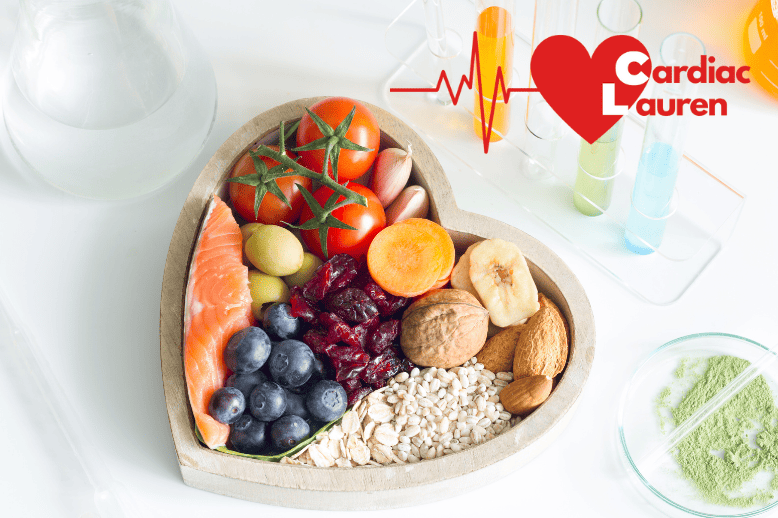
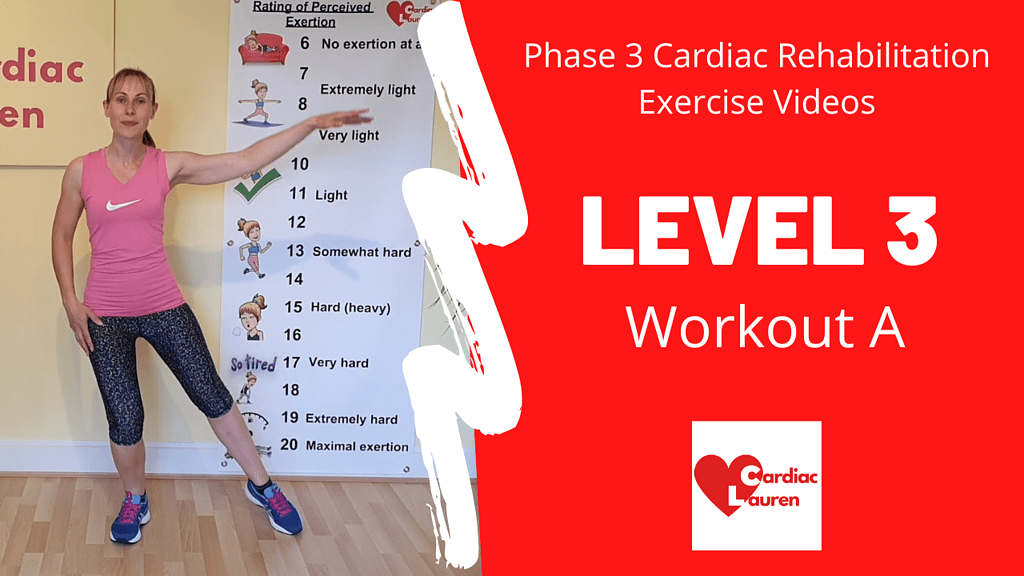
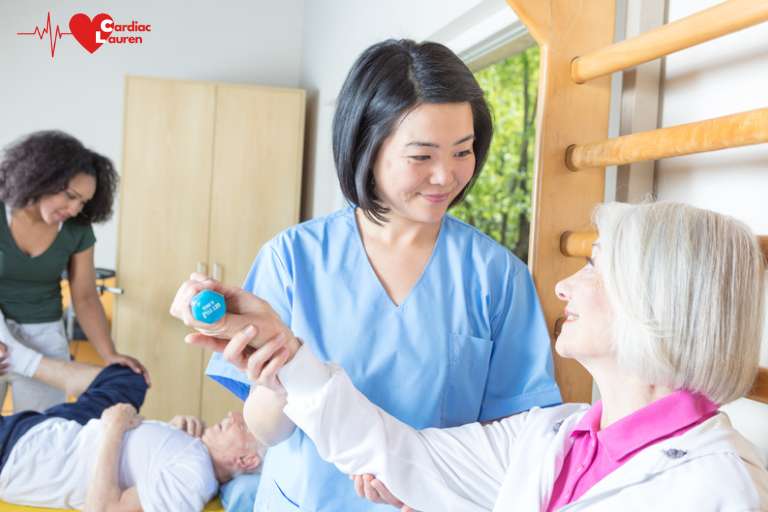
The main aims of Phase III are to:
- Educate you about your condition – why it happened and how to prevent it from happening again.
- Educate and support you on any changes you need to make to your lifestyle – such as diet, stopping smoking, losing weight, exercising more, lowering stress levels, managing blood sugar levels (if you are diabetic) and reducing alcohol intake.
- Support your mental well-being and manage anxiety and stress.
- Encourage you to be more active in everyday life.
- Be able to achieve 20 minutes of continuous cardiovascular exercise.
- Be able to monitor yourself whilst exercising so it remains at a safe intensity level.
- Understand what and why you take the medication you have been given.
- Learn to live with your condition and for it to not be a reason to stop doing many of the things you did before or would like to do in the future.
In terms of exercise, some Phase 3 cardiac rehab programmes are based in a gym or have gym equipment (bikes, treadmills, rowing machines, steppers etc), whilst others will have a circuit format using weights, resistance bands, steps and your own body weight. No method is better than the other, especially as the main aim is to achieve 20 minutes of continuous aerobic exercise, and each participant will be exercising at a different intensity to the other.
At the end of the Phase 3 programme, everyone will have a better understanding of their condition and how to live with it. For most people, apart from having to take medication daily, their lives can continue as before with the new lifestyle changes they have put in place. For some, their condition requires regular monitoring, but this does not mean they cannot continue to progress on their cardiac rehabilitation journey. If anyone is waiting for a medical procedure, being as fit and healthy as possible pre-operation is extremely beneficial and will make recovery a quicker experience.
What is Phase 4 of cardiac rehabilitation?
Phase 4 of cardiac rehabilitation is where the fun starts! Phase 4 is a chance for you to invest in your long-term mental and physical health, in a safe manner considering your history of a heart event.
The Cardiac Lauren philosophy is that Phase 4 improves not just your overall fitness, but your quality of life. Each online class guides people with a history of a heart event through exercises where no gym membership or expensive equipment is needed. In fact, the most you will need is a chair and milk cartons if you don’t own any lightweights!
There is a diverse range of classes to choose from at Cardiac Lauren, to suit your confidence, ability and mood. You can sample seated classes, high-intensity classes, post-walk classes and many, many more.
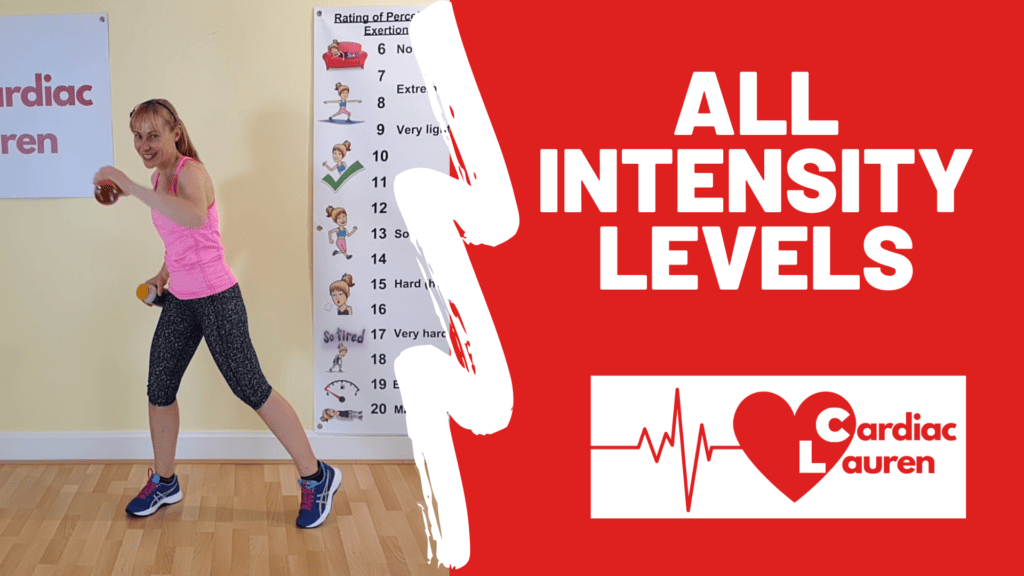
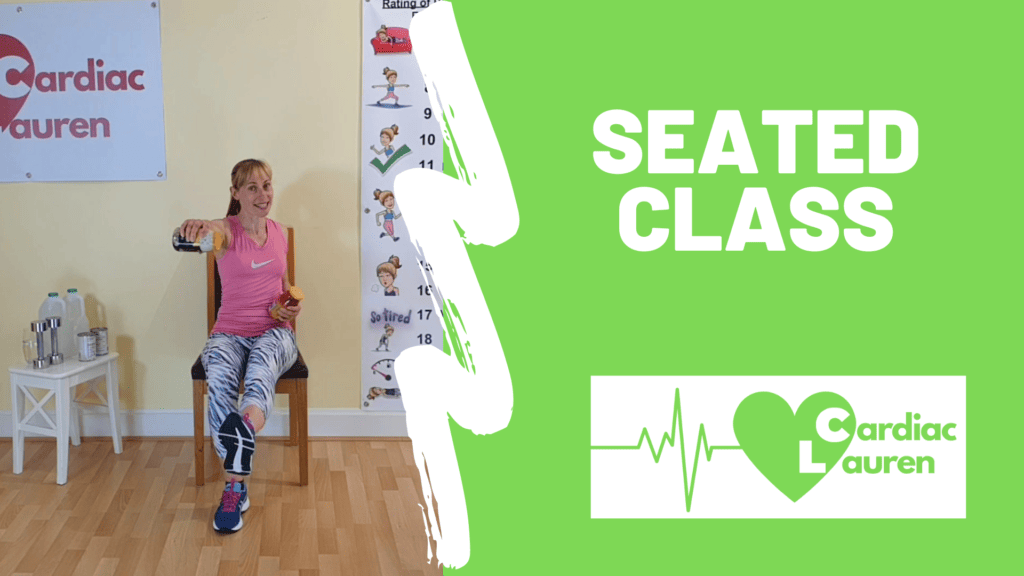
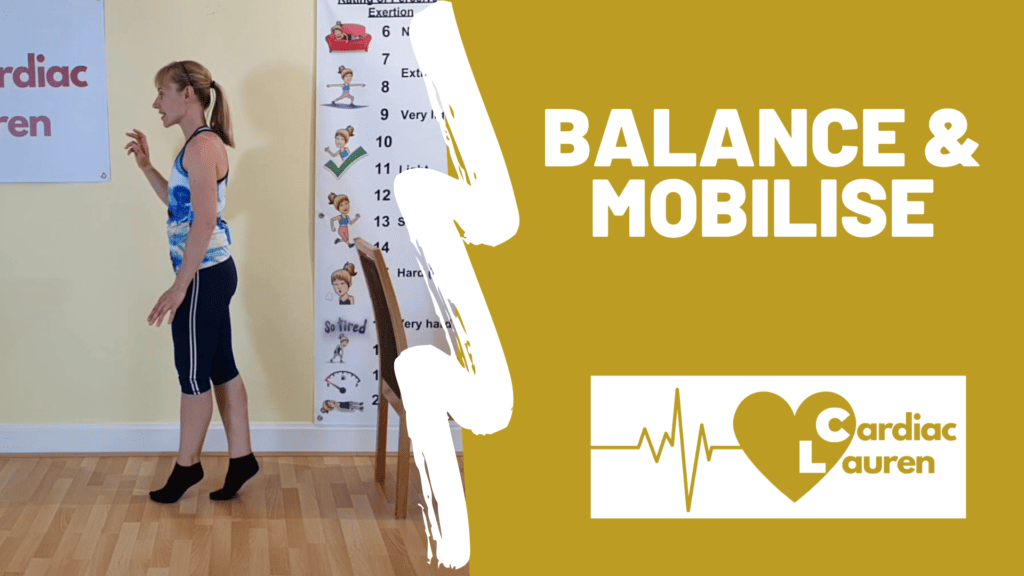
Although some patients may feel anxious about the strain they may be putting on their heart in exercise classes, especially as they challenge themselves to harder exercise, however, Cardiac Lauren’s classes make use of RPE, which stands for Rating of Perceived Exertion (you are likely to have used this in Phase 3).
RPE is a subjective measure of how hard someone feels they are exercising – to help people gauge their intensity level during physical activity. Anywhere between RPE 11 & 14 is generally desired – i.e. ‘fairly light’ to ‘somewhat hard’.
Cardiovascular exercise strengthens the heart muscles, enabling you to feel fitter and stronger in daily life.
Phase 4 should be a fun, accessible and sustainable addition to your life, which enables you to live your life without the frustration and restrictions of your heart event history. It also decreases your likelihood of having another heart event, as your heart adapts to exercise and becomes stronger.
